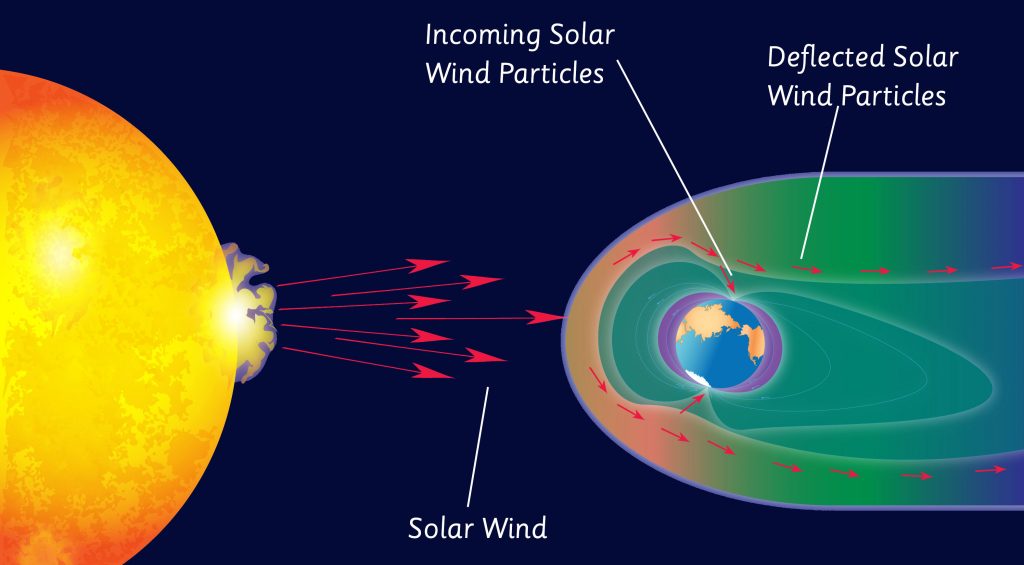Aurora Borealis as seen from Ontario, Canada
The spectacular natural paintings in the sky, the Auroras, have been a consistent feature in the myths and folklores of Northern people living near the North Pole. The breathtaking show is superstitiously known to be the ‘dance of spirits’ amongst the Cree group of Northern America. The astronomer Galileo Galilei in 1616 used the name Aurora Borealis to describe them. ‘Aurora’ comes from the name of the mythical Roman goddess of the dawn who renews herself every morning to fly across the sky, proclaiming the rising of the Sun. ‘Boreas’ is the Greek name for the wind of the north. Apart from the myths that revolve around the phenomenon, this enticing magical visualization of spectrum does not cease to fantasize the hearts of many. Lucky are those who witnessed it and for those who are yet to experience it, add them to your bucket list! The spell bound show never ends for those who see it. Click here to download maths ncert solutions class 10
What causes the dazzling phenomenon?

Auroras are the incredible light show caused by the collisions between the electrically charged particles, emitted from the sun entering the Earth’s atmosphere and gases already present in the atmosphere. The outermost layer of the Sun’s atmosphere called Corona is incredibly hot with a temperature of nearly a million centigrade. The enormous amount of heat rips off the electrons from the hydrogen and helium molecules that the sun is composed of. Therefore, free electrons and free ions are created and plasma is formed, which conducts electricity. The plasma of the corona is too hot to be held by the sun’s gravity. Hence, the plasma continuously expands away from the sun and is blown off as the solar wind (flow of charged particles), permeating the entire Solar system.
Particles that are discharged from the sun travel miles (nearly 150 million km) towards Earth before they are attracted towards the irresistible magnetic North and South poles. As the particle makes its way through Earth’s magnetic field, the free ions and electrons mix up with the atoms and molecules of oxygen, nitrogen and other elements present in the atmosphere, resulting in phenomenon of magical hues in the night sky. The phenomenon at the North Pole is known as ‘Aurora Borealis’ and at South Pole is known as ‘Aurora Australis’.
The colors of Aurora
The collision between the charged particles of the solar wind and atmospheric atoms, ions causes the electrons of the atmospheric atoms to become excited. However, the atoms do not remain in the excited state for long and returns to their ground state. In the process of de-excitation, energy imparted by the colliding electron is emitted. This energy is emitted in the form of colored light, peculiar to each element present in the Earth’s atmosphere. The wavelength of the light emitted determines the color of the auroras.
The electrical state, energy of the particle that hits the atmospheric gas, characteristic color emission of their respective line spectra together contributes to the colors that a person sees across the sky.
RED: At high altitudes, atomic oxygen in the excited state emits energy at 630 nm giving red hues at the top parts of the auroras formed. They are not deep red but lighter in shades because of the less number of oxygen atoms present.
GREEN: At lower altitudes, excited nitrogen molecule transfers energy to an oxygen atom by collision and radiates energy at green wavelength (557.7 nm). Sometimes, red and green intermix to produce pink and yellow hues.
BLUE: The gradual lowering of altitudes makes the oxygen atom. Here, nitrogen and ionized molecular nitrogen takes over in producing visible light emission. So, energy is radiated at larger number of wavelengths in both red and blue part of the spectrum, with 428 nm (blue) being dominant.

The colors depend on the relative proportion of Oxygen and Nitrogen during the aurora process.
Best places to watch Aurora
Getting as close to the poles would increase the chances of getting a glimpse of the magical sky. The important things to be considered for a successful aurora viewing are proximity to the poles, reduced light pollution areas, relatively high ground with un-obscured view north. For getting them all right, the best places are North America and Northern Europe. In North America, the north western parts of Canada, particularly the Yukon, Nunavut, Northwest Territories and Alaska are the favorable parts. In Europe, Scandinavia, particularly the Lapland areas of Norway, Sweden and Finland comes out to be the best places for aurora viewing.
Aurora Australis is best viewed in Antarctica. In order to view the auroras in South Pole, one has to dare the freezing cold in Antarctica. Probably this is the reason; the South Pole Auroras are not much talked about.
Click here to download study material for class 10 cbse
